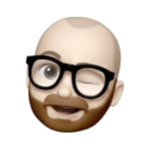About the course
Java is a programming language that has been one of the most popular of all development languages for many years. This is because, unlike many other programming languages, Java is designed for developing large and complex web applications. Among them: banking systems, aircraft management systems, corporate HR systems, large aggregators and platforms (Amazon, Ebay), social networks (LinkedIn), etc. The choice of medium and large businesses for development is almost always Java.
At the same time, Java is considered one of the most difficult programming languages. That is why it is really not easy to become a Java developer. But if you can master this direction, you will become a successful and in-demand specialist until your retirement!
The demand for Java developers is always high and is accompanied by a decent level of salary. This applies not only to experienced specialists with experience, but also to beginners.
Senior Engineer or Team Lead. Today, artificial intelligence skills are becoming increasingly important. Large language models (LLMs) such as ChatGPT, as well as modern tools such as Lovable, allow you to quickly create prototypes of web applications, automate routine tasks, and increase developer productivity. That is why our program focuses not only on classic Java development, but also on the basic skills of integrating and using AI in real projects.
Our instructors have designed the Java course program so that every student gets the necessary basic knowledge and practical skills from scratch. You will be able to study online at your convenience, combine your studies with your work, etc.



 Anyone who already knows a little bit about programming
Anyone who already knows a little bit about programming Everyone who loves to look for non-standard solutions to various problems
Everyone who loves to look for non-standard solutions to various problems Everyone who is dreaming of working in the IT industry
Everyone who is dreaming of working in the IT industry IT practitioners who want to expand their knowledge and learn a new direction for themselves
IT practitioners who want to expand their knowledge and learn a new direction for themselves



















